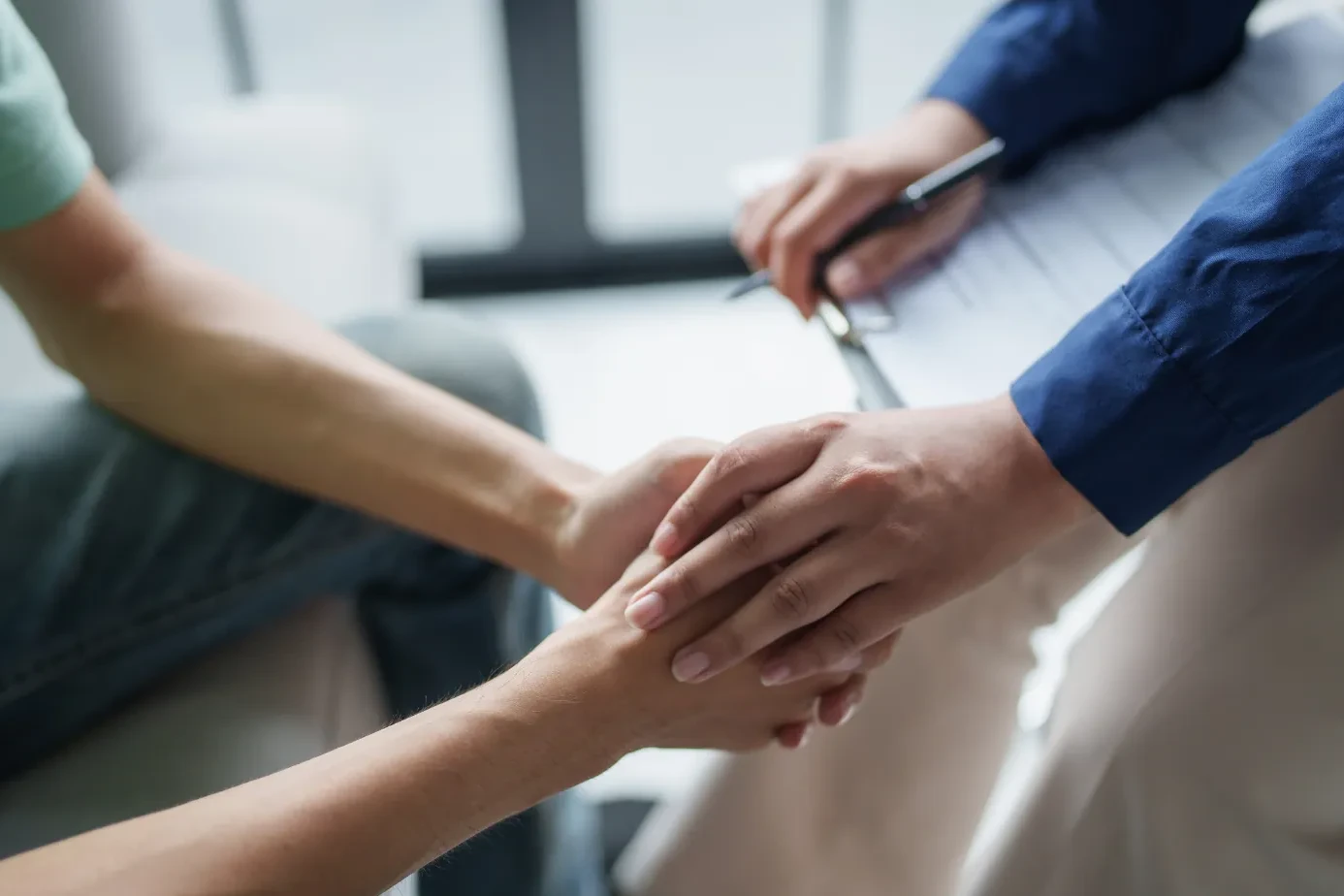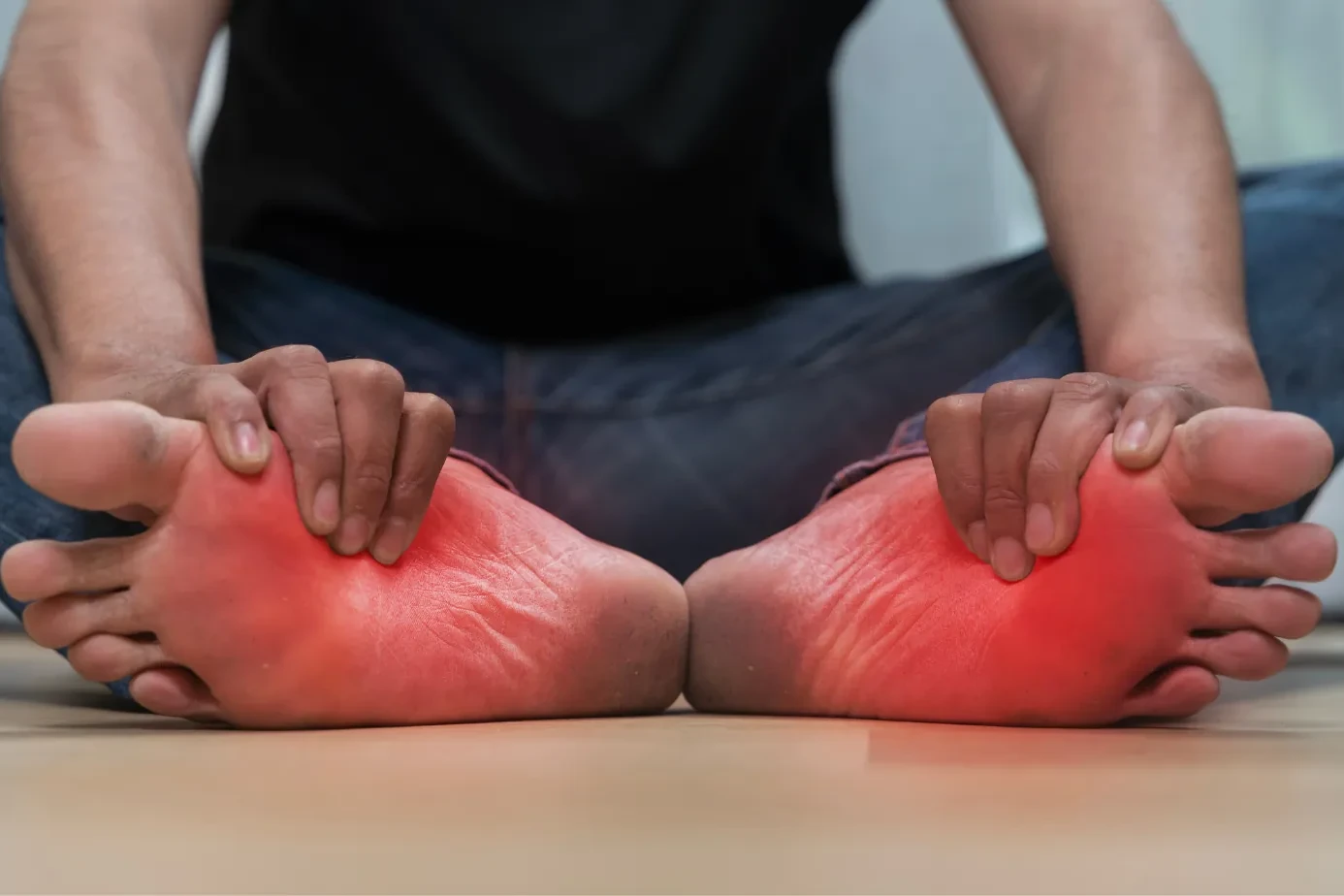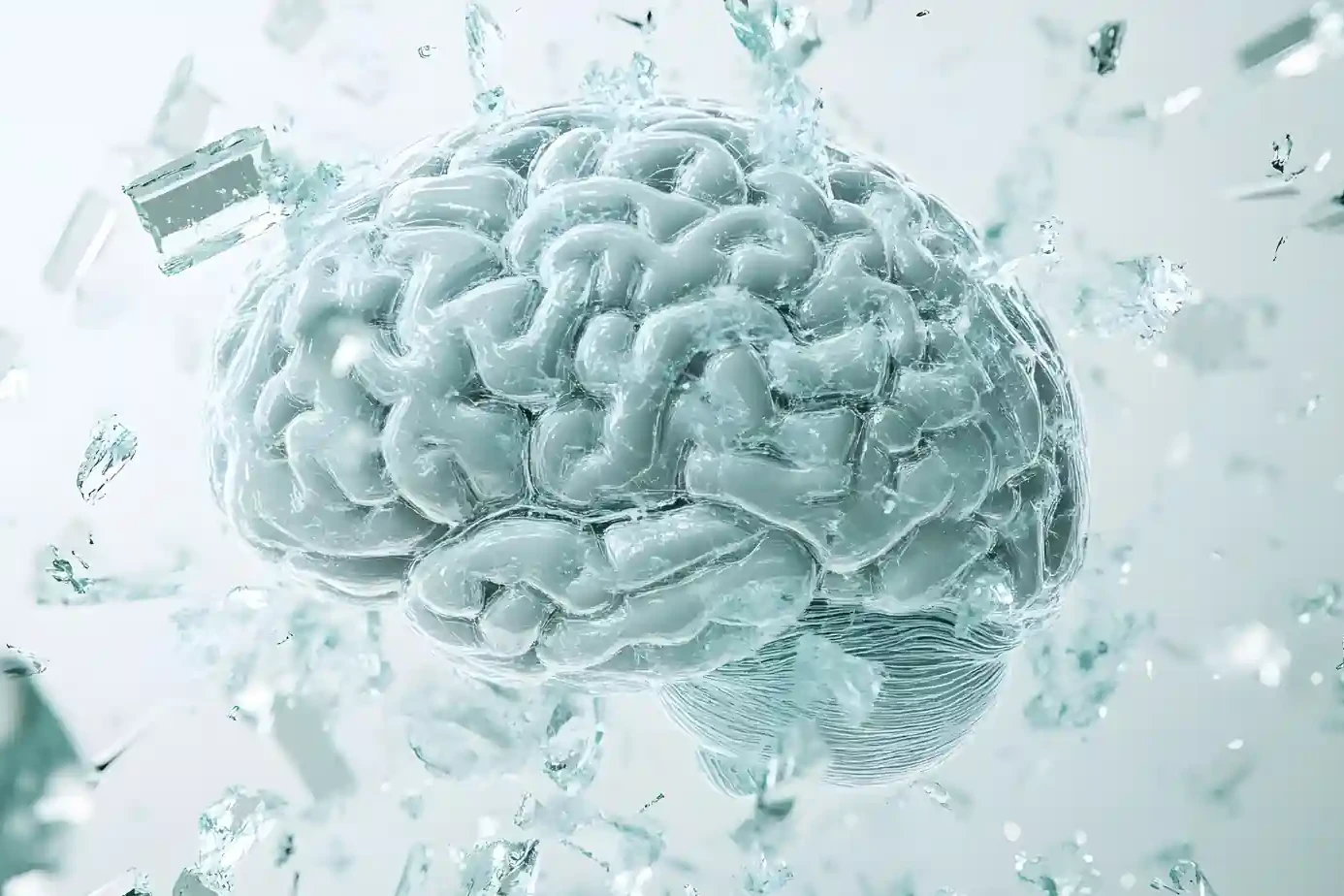Have you ever seen someone with a shaking hand that doesn’t stop? Or someone who walks slowly, dragging their feet? These could be signs of a brain disorder called Parkinson’s disease. It’s not just about shaking. It affects movement, mood, sleep, and even the way people think. And it doesn’t go away.
So, what is Parkinson’s disease really? In simple words, it’s a brain condition that gets worse over time. It mostly affects older people, but younger people can get it too. In this blog, we will explain what is Parkinson’s disease, what causes it, how it shows up in the body, and what treatments are available. This guide is easy to understand and helpful for anyone looking for clear answers.
Table of Contents
ToggleWhat is Parkinson’s Disease?
Parkinson’s disease is a neurodegenerative disorder, which means it slowly damages the brain. The damage mostly affects how a person moves. It starts when nerve cells in a part of the brain called the substantia nigra start to die.
These cells make a chemical called dopamine. Dopamine helps send messages in the brain to control movement. When there’s less dopamine, people start having trouble with walking, talking, and even swallowing.
How does Parkinson’s disease affect the brain?
The brain has many parts, but in Parkinson’s disease, the problem starts deep inside. Here’s how:
- The basal ganglia help control movement.
- Inside them is the substantia nigra, where dopamine is made.
- When the cells here die, the brain has trouble sending movement signals.
This is known as basal ganglia dysfunction. It’s like trying to drive a car with no fuel. Movements become slow, stiff, or shaky.

What are the four cardinal signs of Parkinson’s?
Doctors look for four key signs when checking for Parkinson’s disease symptoms:
- Tremor (shaking when resting)
- Bradykinesia (slow movement)
- Muscle rigidity (stiff arms or legs)
- Postural instability (trouble with balance)
Having these signs helps doctors know if a person may have Parkinson’s.
Is Parkinson’s disease a neurological or muscular condition?
Parkinson’s disease is a neurological disorder. That means the problem starts in the brain, not in the muscles. But because the brain controls muscles, it seems like a muscle problem too. It’s really a brain problem that shows up in the way we move.
What Are the Signs of Parkinson’s Disease?
People may not notice the early signs of Parkinson’s. But they are there. Knowing them can help start treatment early.
What symptoms should you watch for in the early stages?
Here are the first signs to watch out for:
- Hand tremors while resting
- Slower walking
- Trouble getting up from a chair
- Small, messy handwriting
- Stiffness in arms and legs
- A softer voice than normal
These signs may come and go, but they are often the first signs of trouble.
What are the Stages of Parkinson’s Disease?
Doctors use the Hoehn and Yahr scale. It has 5 stages:
| Stage | Description |
| 1 | Mild symptoms, one side only |
| 2 | Both sides affected, balance okay |
| 3 | Balance trouble, still independent |
| 4 | Severe disability, needs help |
| 5 | Confined to bed or wheelchair |
How long does each stage typically last?
The timing is different for each person. But often:
- Stage 1 to 2: 1–2 years
- Stage 2 to 3: 2–4 years
- Stage 4–5: 5+ years
With treatment, many people live for 15–20 years after diagnosis.
How do Parkinson’s symptoms progress over time?
In the beginning, symptoms are mild. Over time, they get worse. Here’s what usually happens:
- Early: Mild tremors or stiffness on one side
- Middle: Trouble with walking, more noticeable shaking
- Late: Problems with balance, memory, and swallowing
Each person’s case is different, but the disease always moves forward.
| Stage | What Happens | What Helps |
|---|---|---|
| Early Signs | Mild tremors, slower movement | Early check-up, awareness |
| Everyday Impact | Trouble with tasks like dressing or eating | Simple tools, extra time |
| Walking Changes | Small steps, feet feel stuck | Walking aids, clear pathways |
| Speech Changes | Soft voice, slower speech | Speech therapy, patience |
| More Support | Needs help with daily life | Safe home setup, kind support |
| Balance Trouble | Feels unsteady, risk of falling | Walking stick, fall-proofing |
What is the difference between tremors and normal shaking?
Tremors from Parkinson’s are different from shaking when nervous or cold.
| Type | Cause | When It Happens |
|---|---|---|
| Parkinson’s Tremor | Dopamine loss in Parkinson’s | At rest |
| Normal Shaking | Stress, anxiety, cold | During movement or stress |
If shaking only happens when relaxed, it could be a sign of Parkinson’s.

What Causes Parkinson’s Disease in the First Place?
The exact cause of Parkinson’s disease is not fully known. But doctors have some clues.
Is Parkinson’s genetic or environmental?
Most cases are not genetic. Only about 10–15% of cases are passed through family genes. The rest are environmental, meaning they come from things around us like:
- Long exposure to pesticides or chemicals
- Head injuries
- Pollution
What role does dopamine play in Parkinson’s disease?
Dopamine is the brain’s way of sending messages about movement. Without it:
- Movements become slow or shaky
- Muscles feel stiff
- Balance is harder to control
Less dopamine = more movement problems. It’s that simple.
Are there any known risk factors or triggers?
Some things can raise the risk:
- Age (most common after 60)
- Gender (men are more at risk)
- Head trauma
- Family history
- Exposure to chemicals
But even people without these risks can still get Parkinson’s.
Who Gets Parkinson’s Disease?
Parkinson’s Disease primarily affects older people, often resembling some people’s grandparents. It is rare in children and younger adults. This gradual onset can be likened to the wear and tear experienced by toys after extensive use, where parts of our bodies also change as we age. In Parkinson’s Disease, it’s a specific part of the brain that begins to deteriorate.
Scientists believe that the development of Parkinson’s is influenced by a combination of factors resembling pieces of a complex puzzle. One significant piece of this puzzle involves genetics. Genes act as tiny instruction books within our bodies, inherited from our parents, shaping traits like eye colour or hair texture. Certain genetic variations may predispose individuals to a higher risk of Parkinson’s Disease.
Environmental factors constitute another piece of the puzzle. Factors such as the air quality we breathe, our dietary habits, and exposure to toxins may also play a role, albeit to a lesser extent, compared to genetics. Researchers continue to investigate these factors meticulously, akin to detectives using magnifying glasses to scrutinize each clue.
Parkinson’s Disease typically does not manifest suddenly; instead, it progresses slowly over time. This gradual progression can be compared to a slow-motion movie, where subtle changes accumulate gradually. These changes might include slower movements or minor tremors in the hands, initially subtle enough to be overlooked.
How is Parkinson’s Disease Diagnosed by Doctors?
There is no single test for Parkinson’s diagnosis. Doctors rely on a combination of signs, tests, and history.
What tests are used to identify Parkinson’s?
- Neurological exam
- Movement tests
- Medical history review
There’s no blood test for it. Diagnosis is based on observation and expert opinion.
Can brain scans detect Parkinson’s disease?
Brain scans like MRI and DaTscan can help rule out other problems. But they don’t confirm Parkinson’s alone.
- MRI: Shows brain structure
- DaTscan: Shows dopamine activity (can show loss)
What are the clinical criteria for a Parkinson’s diagnosis?
Doctors follow this checklist:
- Presence of bradykinesia
- One or more: tremor and rigidity, postural issues
- Symptoms that improve with Parkinson’s medicine
This helps make a proper diagnosis.
Can We Treat Parkinson’s Disease?
Even though we can’t get rid of Parkinson’s Disease, there are lots of things doctors can do to help. Let’s explore how neurologists help Parkinson’s patients feel better and move more efficiently.
Medicines: The Best and the safest option
One of the main ways to help with Parkinson’s is through medicines. These medicines are like superheroes for the brain. They help make more dopamine and help the brain use it more effectively.
Taking these medicines is like giving the brain an extra hand to work with. They can reduce shaking, make moving more accessible, and help with balance. People with Parkinson’s need to take their medicine exactly as the doctor says, just like following a recipe to ensure a cake turns out just right.
Medications are used to manage symptoms
- Levodopa: Most common, replaces lost dopamine
- Carbidopa: Helps Levodopa work better
- Dopamine agonists: Mimic dopamine in the brain
- MAO-B inhibitors: Stop dopamine breakdown
Levodopa is the gold standard. It helps most patients move better. But over time:
- Its effects wear off faster
- Some patients get unwanted movements (dyskinesia)
Still, it’s the first choice for many.
Surgical options exist
For advanced cases, deep brain stimulation is helpful. A small device is placed in the brain to send signals. It can:
- Reduce tremors
- Improve stiffness
- Lower medicine doses
Not everyone qualifies, but it can change lives.
Physical Therapy: Keeping the Body Moving
Physical therapy is another super helpful treatment. It’s like a particular exercise designed just for people with Parkinson’s. A physical therapist can show them exercises to strengthen their muscles, improve their balance, and keep them flexible. It’s like having a coach who knows the best exercises for their body.
Exercises recommended for Parkinson’s patients
- Large, repeated movements (like boxing)
- Strength training
- Balance and coordination work
- Stretching
These help reduce stiffness and improve motion.
Speech Therapy: Helping with Words
Sometimes, Parkinson’s can make talking a bit tricky. That’s where speech therapy comes in. It’s like a teacher for your voice and mouth, helping you speak louder and more precise. They use special exercises to strengthen their talking muscles, making chatting with friends and family easier.
Occupational Therapy: Everyday Skills
Occupational therapy is all about helping with everyday tasks. An occupational therapist teaches people with Parkinson’s different ways to get dressed, eat, and write. It’s like learning new shortcuts to make these tasks easier.
Support and Love: The Best Medicine
Apart from all these treatments, support and love from family and friends are super important. It makes a big difference when someone knows they are not alone on this journey. A smile, a helping hand, or listening can be the best medicine.
How common is Parkinson’s disease worldwide and in the U.S.?
- Over 10 million people live with Parkinson’s globally
- About 1 million in the U.S. alone
- 1 in 100 over age 60 has it
What is the average age of onset?
Most are diagnosed between 60–70 years old. But early onset Parkinson’s can happen before age 50.
What are recent breakthroughs in Parkinson’s research?
- Genetic discoveries
- Better brain imaging
- New medicine trials
- Studies on gut bacteria and Parkinson’s
These offer hope for better treatment in the future.
Speak to a Trusted Neurologist Today
If you or a loved one show signs of Parkinson’s, early care is key. Dr. Chandril Chugh, a US-trained, board-certified neurologist, specializes in treating movement disorders, tremors, memory issues, and more. Book your consultation today and take the first step to better brain health.
FAQs
Are Parkinson’s Disease and Dementia Related?
Parkinson’s Disease and dementia can be related. Some people with Parkinson’s develop a specific type of dementia known as Parkinson’s Disease Dementia, which affects cognitive functions like memory and reasoning.
Are Parkinson’s Disease and Multiple Sclerosis Related?
Parkinson’s Disease and Multiple Sclerosis (MS) are not directly related. They are both neurological disorders but affect the brain and body differently. MS affects the central nervous system’s ability to communicate with the rest of the body, while Parkinson’s primarily affects movement.
Is Parkinson’s Disease Hereditary or Genetic?
Parkinson’s Disease can have a genetic component, but most cases are not directly inherited. In a small percentage of cases, specific genetic mutations are associated with the disease.
Is Parkinson’s Disease Fatal or Terminal?
Parkinson’s Disease itself is not considered a fatal disease, but it can lead to complications that may be life-threatening. The progression of the Disease varies significantly among individuals.
Is Parkinson’s Disease Curable?
Currently, there is no cure for Parkinson’s Disease. However, treatments are available to manage symptoms and improve quality of life.
Is Parkinson’s Disease Painful?
Many people with Parkinson’s Disease experience pain, which can be a result of muscle stiffness, rigidity, or dystonia associated with the Disease.
Is Parkinson’s Disease Autoimmune?
Parkinson’s Disease is not classified as an autoimmune disease. It is a neurodegenerative disorder primarily affecting the motor system.
Is Parkinson’s Disease Contagious?
No, Parkinson’s Disease is not contagious. It cannot be spread from one person to another.
Is Parkinson’s Disease a Disability?
Parkinson’s Disease can be considered a disability as it can significantly impact a person’s ability to perform daily activities and work tasks, especially as the disease progresses.
Is Parkinson’s Disease Dementia?
Parkinson’s Disease Dementia is a condition that can develop in the later stages of Parkinson’s Disease, characterized by cognitive decline and memory problems.
Can Parkinson’s Disease Affect Your Eyesight?
Parkinson’s can affect vision, but these issues are usually related to the disease’s motor symptoms, like blinking less often or having difficulty moving the eyes.
Can I Drive with Parkinson’s Disease?
Some people with Parkinson’s can continue to drive, but it depends on the severity of their symptoms. Regular assessments are necessary to ensure safety.
Do I Have Parkinson’s Disease?
If you suspect you have Parkinson’s Disease, it’s essential to consult a neurologist for a proper diagnosis. Symptoms can vary and may be similar to other conditions.
Does Parkinson’s Disease Run in Families?
While most Parkinson’s cases are sporadic, a small percentage have a genetic link. Having a family member with Parkinson’s slightly increases your risk.
Does Parkinson’s Disease Affect the Brain?
Yes, Parkinson’s primarily affects the brain, especially regions that control movement.
Can I Prevent Parkinson’s Disease?
There is no known way to prevent Parkinson’s Disease, but maintaining a healthy lifestyle might reduce risk.
Can Parkinson’s Disease Cause Seizures?
Parkinson’s Disease itself does not typically cause seizures. Seizures are more associated with other neurological conditions.
Can Parkinson’s Disease Be Slowed Down?
While there is no cure for Parkinson’s, certain medications and therapies can help slow the progression of symptoms in some people.
Can Parkinson’s Disease Cause Hallucinations?
Hallucinations can occur in later stages of Parkinson’s, often due to medication side effects or the development of Parkinson’s Disease Dementia.
Can Parkinson’s Disease Cause Weight Loss?
Yes, weight loss can occur in Parkinson’s Disease due to various factors like loss of appetite, difficulty eating, and increased energy expenditure due to tremors.
Can Parkinson’s Disease Come on Suddenly?
Parkinson’s Disease usually develops gradually. Sudden onset of symptoms is uncommon.
How Do Parkinson’s Disease Patients Die?
Death in Parkinson’s Disease patients is often due to complications from the disease, such as infections or falls, rather than the Disease itself.
How Does Parkinson’s Disease Affect the Body?
Parkinson’s Disease primarily affects motor functions, leading to symptoms like tremors, stiffness, and balance issues. It can also impact speech, facial expressions, and, in later stages, cognitive abilities.
How Long Do Parkinson’s Disease Patients Live?
Life expectancy for Parkinson’s patients can be near average, but this varies significantly among individuals and depends on overall health and disease progression.
How Is Parkinson’s Disease Caused, Diagnosed, and Treated, and How Does It Affect the Nervous System, Brain, Cardiovascular System, and Daily Life?
Parkinson’s Disease is caused by the loss of dopamine-producing cells in the brain. It’s diagnosed based on medical history, symptoms, and neurological exams. Treatment typically involves medication and therapy to manage symptoms. The Disease affects various systems, leading to motor and non-motor symptoms that impact daily life. The cardiovascular system can be affected indirectly due to changes in movement and activity levels.
Can You Live a Normal Life with Parkinson’s?
Many people with Parkinson’s Disease maintain a good quality of life, especially with effective management of symptoms.
Do You Fall with Parkinson’s Disease?
Falls can be a risk due to balance and coordination challenges in Parkinson’s Disease.
Who Is Most Likely to Get Parkinson’s Disease and What Celebrity Has It?
Risk factors include age (usually older adults), family history, and potentially environmental factors. Several celebrities have been diagnosed with Parkinson’s, including Michael J. Fox, who is a prominent advocate for research.
Who Treats Parkinson’s Disease?
Parkinson’s Disease is primarily treated by neurologists and specialists in brain and nervous system disorders.
Age at Which Parkinson’s Disease Occurs & Who Is Most Likely to Get It?
Parkinson’s typically develops in people over 60 years old, though it can occur earlier (early-onset Parkinson’s). Risk factors include age, family history (genetics), and possibly environmental factors.
Celebrities with Parkinson’s Disease?
Michael J. Fox is a well-known celebrity with Parkinson’s Disease. He has been a vocal advocate for research and awareness.
Who Treats Parkinson’s Disease?
Neurologists are the primary doctors who diagnose and treat Parkinson’s Disease, often in collaboration with other healthcare professionals.
Parkinson’s Disease and COVID-19?
People with Parkinson’s may have a higher risk of severe COVID-19 due to age and other health conditions.
Parkinson’s Disease and Swallowing, Speech, Vision?
Parkinson’s can affect swallowing, speech, and vision due to muscle stiffness and coordination issues.
Parkinson’s Disease and Alcohol, Sleep, Diet?
Alcohol can interact with Parkinson’s medications; sleep disturbances are common; dietary adjustments may help manage symptoms.
Parkinson’s Disease and Depression, Anxiety?
Depression and anxiety are common in Parkinson’s, partly due to the impact of the Disease on life and brain changes.
Parkinson’s Disease and Sex?
Sexual function can be affected due to medication side effects and emotional factors.
Is Huntington’s Disease Like Parkinson’s?
Huntington’s and Parkinson’s both affect movement, but Huntington’s has distinct genetic causes and symptoms.
Parkinson’s Disease or Schizophrenia?
These are different; Parkinson’s primarily affects movement, whereas schizophrenia is a mental health disorder affecting thoughts and perceptions.
Parkinson’s Disease Orthostatic Hypotension, Organs Affected?
Orthostatic hypotension (drop in blood pressure upon standing) can occur; various body systems can be impacted over time.
Parkinson’s Disease and Cannabinoids, Cancer?
Research on cannabinoids (like CBD) for symptom relief is ongoing; there’s no direct link between Parkinson’s and cancer.
Can You Work with Parkinson’s?
Many continue working, depending on symptom severity and job nature.
Parkinson’s Disease Without Shaking, What Can Mimic It?
Some forms have minimal tremors; conditions like essential tremors or multiple system atrophy can mimic Parkinson’s.
Parkinson’s Disease Hypotension, Handwriting Changes, Diagnosis?
Hypotension, smaller handwriting (micrographia), and diagnosis through clinical evaluation are typical.
Parkinson’s Disease in India, Statistics, Lifespan, Lewy Bodies?
Prevalence, life expectancy, and pathology (like Lewy bodies in the brain) are areas of ongoing research globally, including in India.
Parkinson’s Disease MRI, Nausea, Quality of Life, Statistics?
MRI for diagnosis, nausea from medications, quality of life concerns, and statistical studies are part of comprehensive Parkinson’s care and research.
About The Author

This article is medically reviewed by Dr. Chandril Chugh, Board-Certified Neurologist, providing expert insights and reliable health information.
Dr. Chandril Chugh is a U.S.-trained neurologist with over a decade of experience. Known for his compassionate care, he specializes in treating neurological conditions such as migraines, epilepsy, and Parkinson’s disease. Dr. Chugh is highly regarded for his patient-centered approach and dedication to providing personalized care.
→ Book a consultation to discover which remedies suit your needs best.




